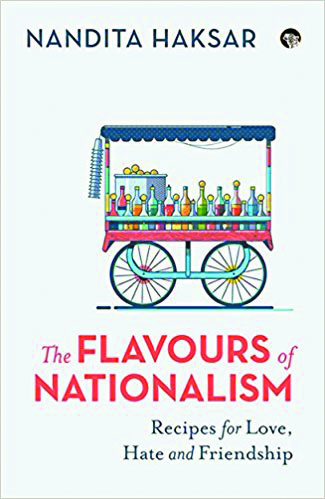The Flavours of Nationalism
Author : Nandita Haksar
Publisher : Speaking Tiger, Rs 350
This book looks at norms related to caste, class, gender, and religion in India through its varied yet unique culinary cultures that reflect in the personal as well as the political spheres and give the nation a distinctive taste, writes Anubhav Pradhan
Since ancient times, what one eats and how has defined one’s place in society. In South Asia, food cultures have been as dynamically diverse as the many levels and layers of the society. Surveyed from above, they reflect in their vividness the plurality of histories and practices which have heterogeneously constituted the contours of belonging and identity in the subcontinent.
At a time when Indianness is being homogeneously distilled as a series of singular dispensations, this is an important lesson to remember. Even though Indianness as we commonly understand it today may well be the uneasy child of modernity and nationalism, the texture, touch, and taste of what it means to call one’s home India is a legacy marinated richly with symbiotic innovation. For potently evoking this shared gastro-cultural heritage, Nandita Haksar’s The Flavours of Nationalism: Recipes for Love, Hate, and Friendship is a memoir which deserves to be read.
Presented through five thematic chapters titled topically as “Meat-Eating Brahmins from Kashmir”, “Growing up Indian”, “Feminist Furies”, “Flavours of Class, Caste, Religion and Ethnicity”, and “Globalisation in Goa,” the book strongly urges for the personal to be seen as indelibly public and political. Haksar’s communal heritage of centuries of participation in the composite culture of the Hindustani heartland and her personal life journey as a human rights lawyer and a feminist are consistently foregrounded as the bases of her staunch commitment to Indianness. This quality of what it means to be Indian is an introspective acceptance of difference, a readiness to respect and to partake of foodstuffs and food habits divergent from one’s own.
In “Growing up Indian,” for instance, Haksar recalls the ease with which her parents made friends within and outside newly independent India by experimenting with different kinds of foods and food traditions. In the cautiously optimistic post-War environment of decolonisation, food diplomacy as Haksar calls it allowed her father — freedom fighter and diplomat — to project young India as an accepting, all-encompassing nation built on mutual and reciprocal appreciation of different cultures and cuisines. While these and other anecdotes may well seem rarefied to most readers given the many privileges Haksar grew with, they serve as a representative reminder of the attitudes to nation-building and nationalism which the pioneering generation of India’s ruling elites espoused.
By contrast, then, the gradual narrowing of the ambit of the acceptable in terms of dietary habits and preferences appears as a corollary of the corrosion of this foundational ideal of Indian nationalism. Haksar identifies various identitarian movements as instrumental in the essentialisation of communal and regional identities and, consequently, of food cultures in contemporary India. As much through riots and bans as through majoritarian indifference to regional cuisines and customs, the big things as well as the small, the mutual tolerance which held Indian society together and constituted one of the pillars of Indian nationalism has been in steady abeyance over the past few decades. One of the many pertinent examples of this given by Haksar is the ongoing trial of a migrant Naga labourer jailed for killing and attempting to eat peacocks, a practice common in Nagaland but abhorrently criminal in the eyes of the police and judiciary in Gurugram.
However, what we eat and how has not just been a victim of internal politics in Haksar’s assessment. The steady liberalisation of the Indian economy since the early 1990s, the emergent commercialisation of food production and distribution, and the so-called globalisation of dietary aspirations and choices have struck a resounding blow to long-standing indigenous techniques, traditions, and flavours. For example, frogs’ legs, a much-loved Goan delicacy, has been criminalised and banned given the sudden depletion in frog population in the State. While local catchers and farmers have been blamed for excessive consumption, Haksar argues that the larger share of blame lies with promotion of pesticides by the State for agriculture and in the sudden export value of this local commodity discovered by multinational corporations.
To Haksar’s credit, her arguments in The Flavours of Nationalism appear cogent and convincing because she makes her case not simply on the basis of familial and personal lived experiences but also on historical and legal scholarship on South Asian food cultures.
The text is also enriched by the reproduction of choice recipes through the text, reflecting Haksar’s syncretic sense and experience of Indianness. True, the narrative itself appears disjointed and a little too episodic, a series of reminisces and not a laboured bildungsroman, but charitable readers may well find in this deep, gastric and cultural metaphors of Indianness as a whole.
The reviewer is a Doctoral Candidate with the Department of English, Jamia Millia Islamia. The views expressed are his own


























